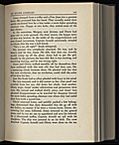| Entries |
| F |
|
Fiction
|
Chicago fiction has been written from practically every imaginable aesthetic approach: popular potboilers, deterministic naturalism, grim realism, postmodern surrealism, lyrical understatement, high modernism, magical realism. But whatever the particular writer's style, certain themes resonate throughout fictional treatments of Chicago: the challenge of building an individual identity in a vast, alienating city; conflicts between and within classes, genders, and ethnic and racial groups; the corrosive effect of urban life on traditional moral values; and the sheer, potentially overwhelming reality of Chicago as a set of ever-changing urban spaces— streets, alleys, parks, beaches, railroads, expressways, theaters, saloons, salons, offices, banks, factories, churches, temples, schools, universities, skyscrapers, apartments, bungalows, slums, and prairies. In these spaces Chicagoans live and work, and writers of Chicago fiction work to tell the stories of the city.

|
But when discussing Chicago and fiction, most of the focus belongs on serious attempts in prose narrative—novels and short stories—to capture the essence of the city, its spaces, and its people. As Carl S. Smith has demonstrated, this project was from the beginning fraught with both aesthetic and ideological challenges, as the booming Chicago of the nineteenth and early twentieth centuries seemed to belong to some new world, a world not particularly amenable to the rules of narrative prose fiction as then practiced. Neither high-flown romance nor genteel realism could grasp a place grown from frontier outpost to world city in the course of two generations. Chicago has challenged fiction writers to contemplate new industrial methods and new urban spaces like the skyscraper; observe violent conflict between capital and labor; think about the moral drama of immigration from the Midwestern hinterland, the far reaches of Europe, and the world; and face the irreducible conflict between an urban culture centered on making money and traditional values placed on high art, civic service, and family virtue.
The earliest Chicago fiction often dealt with historical events such as the Great Fire of 1871 or the Haymarket Affair, but writers such as Henry Blake Fuller addressed the fundamental divide in Chicago culture: the conflict between Philistine moneymaking and traditional cultural values embodied in art, music, literature, and other refined pursuits. Fuller's The Cliff-Dwellers and With the Procession, along with Frank Norris's The Pit, examine the contradictory and occasionally overlapping roles of the businessman and the artist in a city newly created by cutthroat real-estate speculation and shameless civic boosterism.

|

|
Perhaps the most prominent writer to emerge from postwar Chicago is the 1976 Nobel Prize laureate for literature, Saul Bellow. Much of Bellow's fiction is set outside of Chicago, but his long-term association with the city and the University of Chicago mark him as a figure to be considered. His National Book Award–winning Adventures of Augie March and The Dean's December can be read as a matched set, early and late in Bellow's career, depicting industrial and postindustrial Chicago. While Augie March treats Chicago as an energetic if flawed setting with limitless possibilities for intellectual growth and self-realization, The Dean's December depicts Chicago as a postindustrial wasteland, a nightmarish landscape of racial violence, empty materialism, and vapid power seeking. Bellow has, along with most writers in the Chicago fiction tradition, a critical attitude toward the city and its power structure, but his depictions of Chicago are differentiated by his emphasis on the intellectual or spiritual emptiness of the city, as opposed to the realist or naturalist emphasis on material causes for social problems and individual alienation.
Chicago fiction at the turn of the twenty-first century continues along the lines laid out over its first century and a half. Once, native Chicagoan Henry Blake Fuller attempted in fiction to make sense of the new urban environment created by the skyscraper, and Midwestern immigrant Theodore Dreiser showed the naive Carrie Meeber arriving in the bewildering city. Today, writers like Stuart Dybek, Sandra Cisneros, Harry Mark Petrakis, and Ana Castillo show the dilemmas facing both Chicago's bewildered native sons, as their neighborhoods are torn up to build expressways, and newly arrived immigrants, alienated from the city by language and tradition. Whatever their métier or origins, writers of Chicago fiction continue to grapple with the fundamental dilemmas presented by city life in general and by the specifics of Chicago's urban spaces, history, and relentless change.
The Encyclopedia of Chicago © 2004 The Newberry Library. All Rights Reserved. Portions are copyrighted by other institutions and individuals. Additional information on copyright and permissions.